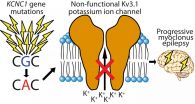Outcome of routine screening of patients with diabetes for CAD with CT angiography
2014-11-17
(Press-News.org) Joseph B. Muhlestein, M.D., of the Intermountain Medical Center Heart Institute, Murray, Utah, and colleagues examined whether screening patients with diabetes deemed to be at high cardiac risk with coronary computed tomographic angiography (CCTA) would result in a significant longterm reduction in death, heart attack, or hospitalization for unstable angina. The study appears in JAMA and is being released to coincide with its presentation at the American Heart Association's Scientific Sessions 2014.
Diabetes mellitus is the most important coronary artery disease (CAD) risk factor; patients with diabetes often develop severe but asymptomatic CAD. The combination of aggressive, asymptomatic CAD has made it the most common cause of death in patients with diabetes. The development of cardiac imaging with high-resolution CCTA now provides the opportunity to evaluate the actual coronary anatomy noninvasively and ascertain the overall extent and severity of coronary atherosclerosis. However, whether routine CCTA screening in high-risk populations can effect changes in treatment (such as preemptive coronary revascularization or more aggressive medical therapy), leading to a reduction in cardiac events, remains unproven, according to background information in the article.
The trial randomly assigned 900 patients with types 1 or 2 diabetes of at least 3 to 5 years' duration and without symptoms of CAD to CAD screening with CCTA (n = 452) or to standard national guidelines-based optimal diabetic care (n = 448). Patients were recruited from 45 clinics and practices of a single health system (Intermountain Healthcare, Utah). Standard or aggressive therapy (for treating abnormal lipid, blood pressure and glucose levels) was recommended based on CCTA findings.
At an average follow-up time of 4 years, the primary outcome event rates (composite of all-cause death, nonfatal heart attack, or unstable angina requiring hospitalization) were not significantly different between the CCTA and the control groups (6.2 percent [28 events] vs 7.6 percent [34 events]). The incidence of the composite secondary end point of ischemic major adverse cardiac events (CAD death, nonfatal heart attack, or unstable angina) also did not differ between groups (4.4 percent [20 events] vs 3.8 percent [17 events]).
"Coronary computed tomographic angiography involves significant expense and radiation exposure, so that justification of routine screening requires demonstration of net benefit in an appropriately high-risk population," the authors write. "These findings do not support CCTA screening in this population."
"What are the take-home messages from this randomized trial," asks Raymond J. Gibbons, M.D., of the Mayo Clinic, Rochester, Minn., in an accompanying editorial.
"Although studies like this are often characterized as 'negative,' there are several important messages. As suggested by the authors, future randomized trials of cardiac imaging in asymptomatic patients with diabetes should be larger and focused on an enriched study population at higher risk. Such a strategy would certainly enhance the chances of success. A more important and more currently applicable message is that guideline-directed medical therapy for hypertension and hyperlipidemia is effective in asymptomatic patients with diabetes and should be implemented more consistently. The data in this study suggest that Intermountain Healthcare has set a new published standard for what is achievable in patients with diabetes with respect to blood pressure control and lipid-lowering therapy and that, when therapy is applied this effectively, patients with diabetes are no longer at high risk for major cardiovascular events."
INFORMATION:
doi:10.1001/jama.2014.15825; doi:10.1001/jama.2014.15958; Available pre-embargo to the media at http://media.jamanetwork.com)
Please see the articles for additional information, including other authors, author contributions and affiliations, financial disclosures, funding and support, etc.
ELSE PRESS RELEASES FROM THIS DATE:
2014-11-17
Yasuo Ikeda, M.D., of Waseda University, Tokyo, Japan, and colleagues examined whether once-daily, low-dose aspirin would reduce the total number of cardiovascular (CV) events (death from CV causes, nonfatal heart attack or stroke) compared with no aspirin in Japanese patients 60 years or older with hypertension, diabetes, or poor cholesterol or triglyceride levels. The study appears in JAMA and is being released to coincide with its presentation at the American Heart Association's Scientific Sessions 2014.
The World Health Organization estimates that annual global mortality ...
2014-11-17
DALLAS - November 17, 2014 - Using next generation gene sequencing techniques, cancer researchers at UT Southwestern Medical Center have identified more than 3,000 new mutations involved in certain kidney cancers, findings that help explain the diversity of cancer behaviors.
"These studies, which were performed in collaboration with Genentech Inc., identify novel therapeutic targets and suggest that predisposition to kidney cancer across species may be explained, at least in part, by the location of tumor suppressor genes with respect to one another in the genome," said ...
2014-11-17
Washington, D.C.--Silicon is the second most-abundant element in the earth's crust. When purified, it takes on a diamond structure, which is essential to modern electronic devices--carbon is to biology as silicon is to technology. A team of Carnegie scientists led by Timothy Strobel has synthesized an entirely new form of silicon, one that promises even greater future applications. Their work is published in Nature Materials.
Although silicon is incredibly common in today's technology, its so-called indirect band gap semiconducting properties prevent it from being ...
2014-11-17
HOUSTON -- (Nov. 17, 2014) - A compound called calcein may act to inhibit topoisomerase IIβ-binding protein 1 (TopBP1), which enhances the growth of tumors, said researchers from Baylor College of Medicine in a report that appears online in the journal Nature Communications.
"The progression of many solid tumors is driven by de-regulation of multiple common pathways," said Dr. Weei-Chin Lin, associate professor of medicine- hematology & oncology, and a member of the NCI-designated Dan L. Duncan Cancer Center at Baylor. Among those are the retinoblastoma (Rb), PI(3)K/Akt ...
2014-11-17
A study led by researchers at University of Helsinki, Finland and Universities of Melbourne and South Australia has identified a new gene for a progressive form of epilepsy. The findings of this international collaborative effort have been published today, 17 November 2014, in Nature Genetics.
Progressive myoclonus epilepsies (PME) are rare, inherited, and usually childhood-onset neurodegenerative diseases whose core symptoms are epileptic seizures and debilitating involuntary muscle twitching (myoclonus). The goal of the international collaborative study was to identify ...
2014-11-17
Scientists have found that altering members of the p53 gene family, known as tumor suppressor genes, causes rapid regression of tumors that are deficient in or totally missing p53. Study results suggest existing diabetes drugs, which impact the same gene-protein pathway, might be effective for cancer treatment.
The University of Texas MD Anderson Cancer Center investigation showed that, in vivo, the genes p63 and p73 can be manipulated to upregulate or increase levels of IAPP, a protein important for the body's ability to metabolize glucose. IAPP is found in some diabetes ...
2014-11-17
BALTIMORE, MD - As the world's diminishing fresh water resources are increasing allocated for human use, agricultural and horticultural production operations must rely more often on the use of brackish, saline, or reclaimed water for irrigation. These saline-rich water sources often contain electrical conductivities that can negativity affect plants' ability to thrive. Salinity is particularly problematic for ornamental plants such as daffodils because of the potential for damage to plants' aesthetics and visual qualities.
In the September 2014 issue of HortScience, Maren ...
2014-11-17
ROCHESTER, Minn. -- One of the family of drugs prescribed for rheumatoid arthritis and other inflammatory conditions is called TNF inhibitors. They act by dampening part of the immune system called tumor necrosis factor (TNF). In one of the balancing acts of medicine, the anti-inflammatory action of the drug also increases the risk for other conditions, in this case, a rare form of eye cancer, uveal melanoma. Mayo Clinic researchers make the case and alert physicians in an article in Mayo Clinic Proceedings.
Mayo researchers studied three patients -- two women and a ...
2014-11-17
Who says your kids don't listen to you?
An Indiana University study has found that setting specific family rules about healthy eating and sedentary behavior actually leads to healthier practices in children.
Data analyzed for the study was originally part of a data set used to evaluate the Wellborn Baptist Foundation's HEROES program, a K-12 school-based obesity prevention initiative set in the Illinois, Indiana and Kentucky tri-state area. However, lead author Alyssa M. Lederer, doctoral candidate and associate instructor in the Department of Applied Health Science ...
2014-11-17
CINCINNATI--Researchers at the University of Cincinnati (UC) have found that a gene abundant in the kidneys may actually play a role in the regulation of blood pressure and hypertension in experimental male mouse models.
The study led by Manoocher Soleimani, MD, James F. Heady Professor of Medicine and associate chair of research in the Department of Internal Medicine at UC, was presented during the annual meeting of the American Society of Nephrology, held Friday, Nov. 15, 2014, in Philadelphia.
The gene, a kidney androgen-regulated protein (KAP) that is abundantly ...
LAST 30 PRESS RELEASES:
[Press-News.org] Outcome of routine screening of patients with diabetes for CAD with CT angiography




